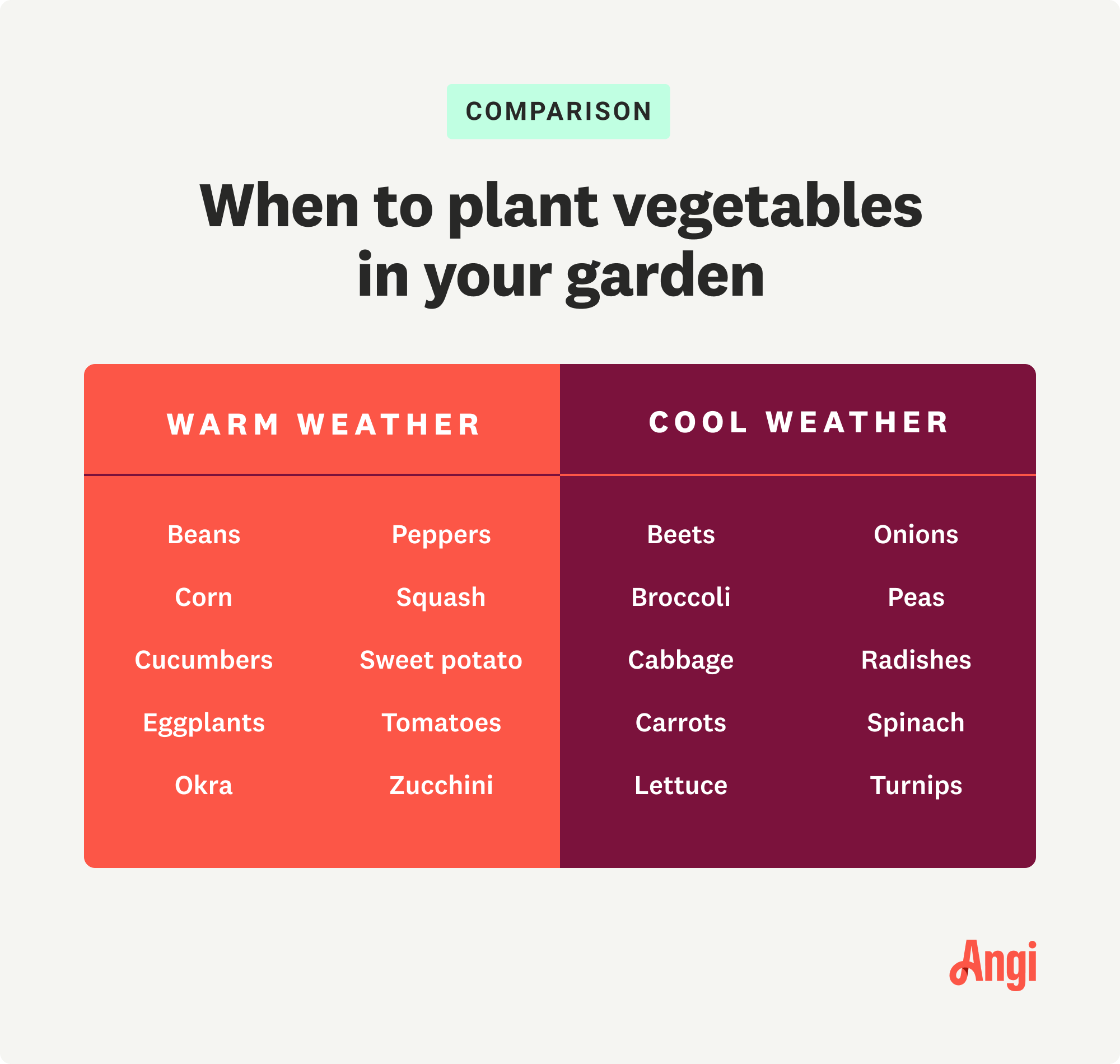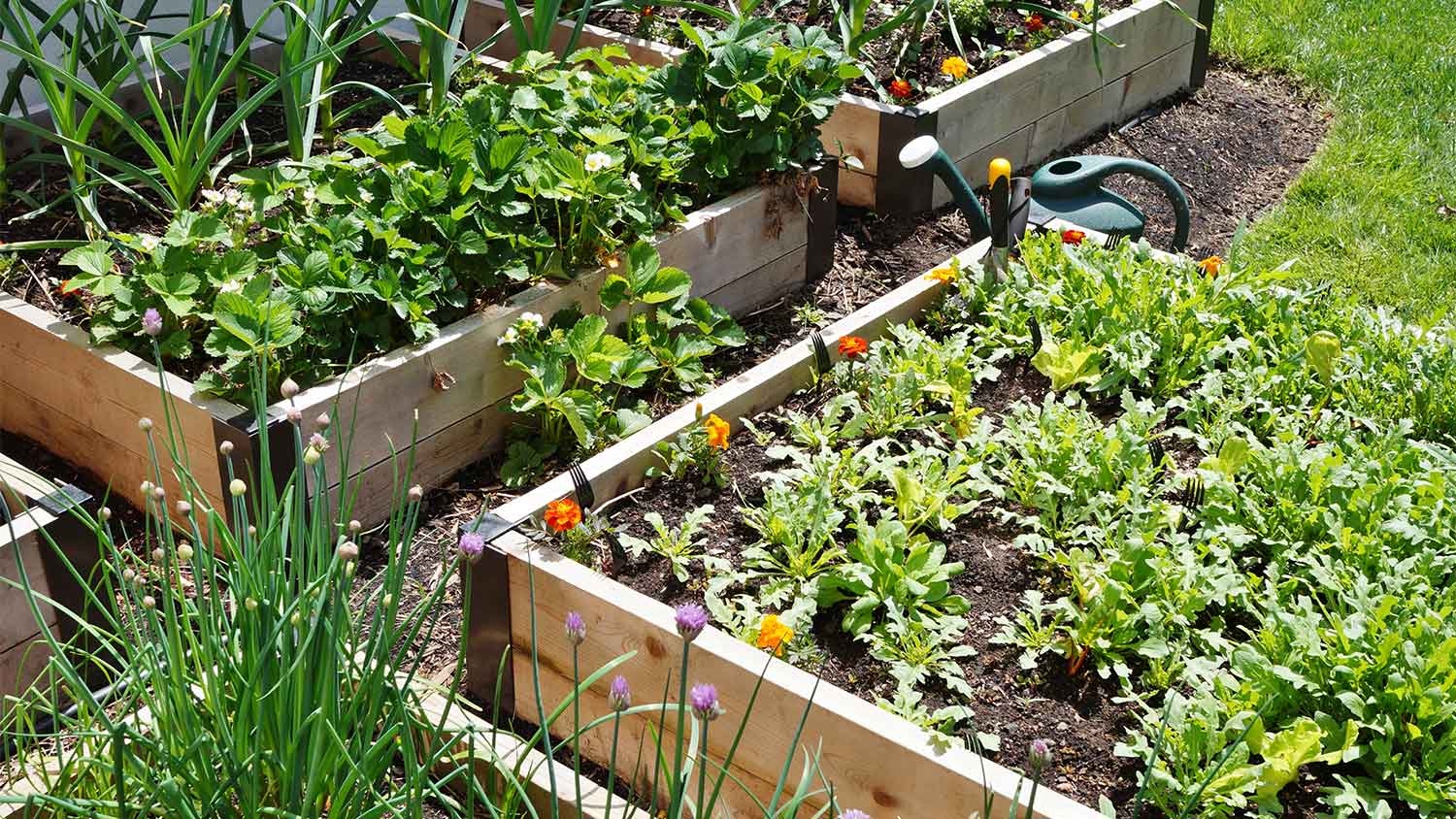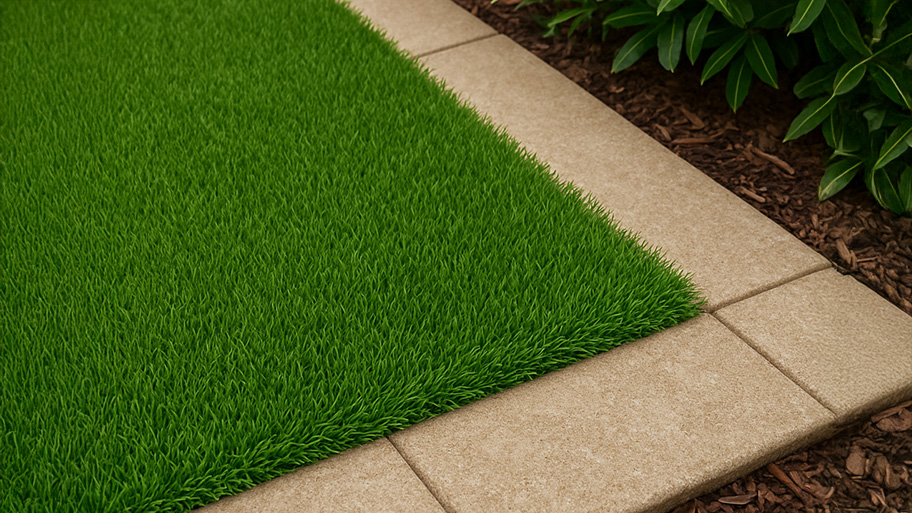
Xeriscape costs depend on materials, the size of your yard, and if you DIY. This guide will help you determine what your xeriscaping project will cost.
A garden good enough to eat takes a little planning and a lot of sunshine


Not everyone has a green thumb, but luckily you don’t need one. The hardest part of vegetable gardening is knowing when and what to plant. With the right tricks (and a little water and sunshine), you can transform a patch of your backyard into a tiny slice of farmland.
Want to get started? This beginner’s guide will show you how to plant a vegetable garden in five simple steps.
Before you plant a vegetable garden, there are a couple of things to consider. First, you have to choose your vegetables, and then you have to plant them at the right time of year.
When you’re growing vegetables, you want to start from vegetable seeds or seedlings. Seedlings are small immature plants that have already rooted. As a result, they take less time to grow. Planting seeds means you’re basically starting from scratch. It’s more affordable, but it’ll take longer to fruit.
As far as the type of vegetables, choose something that works with your USDA Plant Hardiness Zone. Native plants require less maintenance and generally yield a better harvest (though you can still have a bountiful harvest with a non-native plant, too). You may even want to choose edible landscape plants and work them around your yard.
Different crops thrive during different times of year. The majority of crops should be sown sometime in spring and harvested in summer (though veggies like parsnips and beetroot may take longer to grow).
Some cold-hardy crops (like broccoli, kale, potatoes, and winter cabbage) are frost tolerant, and you can plant them in early spring (for a summer harvest) or late summer and early fall (for a fall or winter harvest).
If you’re not sure which to choose for your vegetable garden, a local gardener can help.
Beets
Broccoli
Cabbage
Carrots
Lettuce
Onions
Peas
Radishes
Spinach
Turnips
Beans
Cucumbers
Eggplants
Peppers
Tomatoes
Squash
Okra
Sweet potato
Zucchini
Corn


Though the specifics vary, most vegetables need six to eight hours of daily sunshine. Choose a spot for your vegetable patch or raised bed that’s:
Level
Shielded from the wind
Receives adequate sunshine (per the directions on the seed packet or nursery card).
If you’re not building a raised bed and bringing in your own garden soil, you should choose an area of your yard with the best soil quality.
Once you choose your location, you need to plan your vegetable garden layout. Many people prefer to create a raised bed garden when growing vegetables because it has a crisp look and allows you to use better soil. This is particularly true for homeowners with chalk or clay soil.
Of course, a raised bed garden isn’t the only option. You can create a vertical vegetable garden in less than an hour using stacked planters. You may just want a typical garden bed with a trellis. How to lay out a vegetable garden depends on the type of veggies you want to grow.
For example:
Certain beans thrive on a trellis
Chilies and other small peppers grow well in containers
Pumpkins need space to vine
Tomatoes don’t grow well mixed with corn
Knowing the needs of your plant takes a little research, but once you figure out what your seedlings need, draw your vegetable garden layout on a piece of paper. You should always plant veggies in small groups to prevent the spread of disease.
The ideal soil for a vegetable garden is loamy with lots of organic matter. It should feel fluffy and moist but not saturated. You can purchase garden soil from your local garden center, which is a great option for raised beds. Rake in compost or fertilizer using a garden rake, and pull out weeds.
Before you get started, make sure to test your soil’s acidity. Most of the time, vegetable garden beds need neutral soil. A local soil testing service can help, but you may need to add to your soil to get the right pH.
You may notice that seeds and seedlings come with a set of directions. These directions will tell you the ideal depth and spacing for sowing seeds in your vegetable garden. Use this to inform your vegetable garden layout.
Dig the proper holes with a garden trowel and start planting your veggies. Some plants may need a stake or trellis, so install that in your garden bed, too.
Water is crucial to a healthy vegetable garden. After you plant your vegetables, thoroughly water the garden bed. You can hire a local plant watering service to help maintain a good watering schedule or you can water whenever the first inch of your raised bed garden is dry.
Many people think vegetable gardening is a fulfilling hobby. There’s nothing like biting into a salad you grew on your own—but starting is the hardest part. It can take some trial and error.
If you don’t have the patience, you can hire a local gardener to get you started and give you some easy landscaping ideas. It’s easier to maintain a garden you know is set up for success than to start from square one.
From average costs to expert advice, get all the answers you need to get your job done.

Xeriscape costs depend on materials, the size of your yard, and if you DIY. This guide will help you determine what your xeriscaping project will cost.

How much does hardscaping cost project by project? Check out our breakdown for every price tag you need to know, from outdoor fireplaces to patios.

Leveling your yard can help with drainage and prevent damage to your home. Learn the cost to level a yard and what factors can affect the price.

Will vinegar kill grass and weeds? Get the scoop on what vinegar does to grass, when to use it, and things to consider.

Regrading around your foundation can help prevent water damage to your home. Learn how to build up soil around the house foundation for better drainage.

Opting for a natural turf alternative may have its perks, but the problems with artificial grass can outweigh the good. Get to know these common issues before installing.